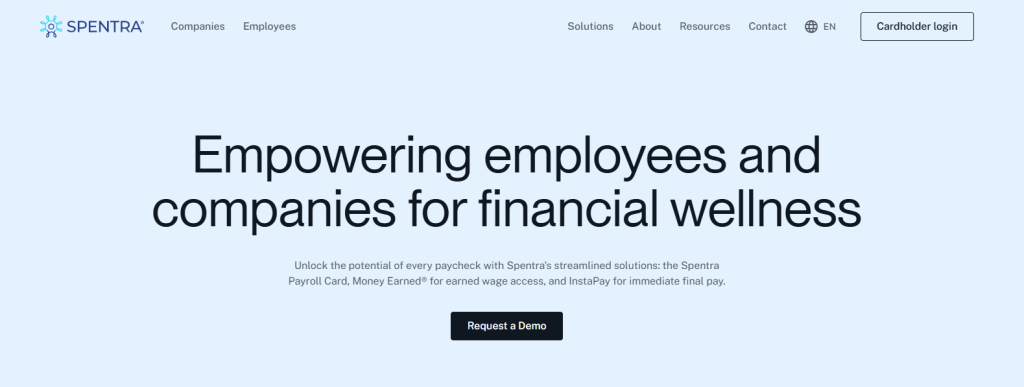Have you ever come across the term micro-copy?
Sounds pretty straightforward, right?
A simple, small copy that draws people’s attention to promote your brand.
Well, it’s a lot more than that and coming up with a compelling micro-copy is specialized work!
Here’s what the term truly means and what you can do to nail your copywriting game.
To begin at the beginning, micro-copy refers to the small yet important pieces of text that guide users through digital experiences. These include button labels, error messages, tooltips, and confirmation messages.
Though often overlooked, micro-copy significantly impacts usability, engagement, and brand perception. Key touchpoints where micro-copy plays a role include:
- Navigation menus
- Call-to-action (CTA) buttons
- Form field instructions and error messages
- System notifications and confirmations
- Loading states and empty screens
Micro-copy has evolved from simple functional text to a strategic brand asset. Initially, its purpose was purely instructional, but as digital interfaces became more sophisticated, brands started infusing personality into these small interactions.
Modern micro-copy aligns with a brand’s voice and helps shape user experiences by making them more engaging, intuitive, and human-like.
Each interaction with micro-copy contributes to the overall brand experience. When executed well, it builds trust, reduces frustration, and strengthens emotional connections.
Poorly crafted micro-copy, on the other hand, can confuse users, leading to disengagement. These micro-moments collectively influence user retention, satisfaction, and brand loyalty.
Inside this article,
What is the psychology of micro-copy?
Humans process short text quickly, making micro-copy a powerful tool for guiding attention and shaping behaviors. Using simple, direct language ensures comprehension and retention while avoiding cognitive overload.
Emotionally resonant micro-copy fosters deeper engagement. Friendly and reassuring tones can reduce frustration, while urgency-driven messages can encourage action. A well-placed bit of humor or empathy can make interactions more memorable and human.
Subtle wording choices impact decision-making. For instance, framing a CTA as “Get Started” versus “Sign Up” can evoke different psychological reactions. Strategic use of persuasive elements in micro-copy can guide users toward desired actions without feeling intrusive.
Brand voice architecture
A brand’s voice should be consistent across all touchpoints. Defining voice principles—such as being friendly, authoritative, or witty—ensures alignment with the brand’s identity and user expectations. Not all interactions require the same tone. A voice spectrum allows brands to adjust their tone depending on the context.
For example, an error message might be more reassuring, while a promotional CTA could be more energetic. To maintain consistency, organizations should document voice guidelines. This can include a brand style guide, voice charts, and specific examples of do’s and don’ts to ensure alignment across teams.
Also read: Rise of microinteractions in modern UX and website design
How to create a micro-copy strategy by touchpoint?
Here are some points to keep in mind while you are planning your strategy. Note that the plan for micro-copies are different compared to copywriting for social media and digital marketing endeavors:
Navigation and menu language optimization
Clear and intuitive navigation copy enhances usability. Concise, action-driven labels help users find what they need effortlessly.
Form field guidance and error messages
Well-crafted form instructions prevent errors before they happen. When errors do occur, micro-copy should be informative and constructive rather than generic or discouraging.
Call-to-action button copy psychology
Effective CTAs balance clarity with persuasion. They should communicate benefits clearly and use action-oriented language, such as “Discover More” instead of “Click Here.”
Transactional messages and confirmations
Post-action confirmations, like order placements or account activations, should reassure users with clear and friendly messaging, reinforcing positive experiences.
Loading states and system feedback
Waiting can be frustrating, but well-designed micro-copy during loading states can improve user patience by setting expectations (“Almost there…” or “Fetching your data…”).
Empty states and zero-data screens
When users encounter empty states, guiding them on the next steps is crucial. Messages like “No results found—try refining your search” help maintain engagement.
Technical writing for brand expression
Good UX writing ensures that micro-copy aligns with both usability principles and brand voice, making interactions seamless and meaningful. While clarity should never be compromised, personality can enhance engagement. Striking the right balance prevents micro-copy from being either too robotic or too casual.
Inclusive micro-copy accounts for diverse users, including those with disabilities. Using simple, descriptive language benefits screen readers and non-native speakers. For industry specific approaches, go for these solutions:
Financial services: Trust and clarity in minimal text
Financial interfaces require precise, jargon-free language to instill trust and ensure comprehension.

E-Commerce: Conversion-focused micro-copy techniques
Persuasive product descriptions, urgency-driven CTAs, and reassuring checkout messages can boost conversions.

B2B SaaS: Technical accuracy with personality
B2B micro-copy should balance technical accuracy with a touch of approachability to make complex information digestible.

Healthcare: Empathetic and clear informational copy
In healthcare, clarity and empathy are essential. Messages should be reassuring, avoiding unnecessary complexity or ambiguity.

What are some micro-copy testing methodologies?
Testing different versions of micro-copy helps identify what resonates best with your users. Know that even small changes can yield significant improvements in engagement and conversions. To test your micro-copies, try gathering qualitative feedback on your micro-copy through user interviews or surveys. This always ensures alignment with user expectations.
Beyond these tactics, tracking user interactions with micro-copy elements provides insights into what works and what needs improvement. Heatmaps, click-through rates, and session recordings can reveal engagement patterns. With these tools in place, there is almost nothing standing in the way between you and your desired results.
Also read: Creating compelling landing pages that convert
Implementation across organizations
Here are some ideas to implement your ideas across your organization:
Creating micro-copy playbooks and guidelines
A centralized repository of micro-copy examples, best practices, and tone guidelines ensures consistent implementation across teams.
Cross-functional collaboration
Effective micro-copy requires collaboration among brand strategists, UX designers, and website developers. Establishing workflows ensures alignment from ideation to implementation.
Training methodologies for consistent application
Workshops, style guides, and regular audits help teams stay aligned with brand voice and maintain micro-copy quality.
By this point, it’s clear that as AI-driven chatbots and voice assistants become more common, micro-copy will evolve. It will expand to further support natural, conversational interactions.
Regularly reviewing and refining micro-copy ensures it stays relevant and effective.
Get in touch with experts like Reinaphics to get your strategy in place today!




